It’s Word Tips time and today I’m going to talk about bullet points – why we use them and how to use and format them. Next week, I’m going to treat you to some tips about how the language and punctuation of bullet pointed text works. But for now …
Why do we use bullet points?
Bullet points help to make what you’re saying more clear. They break up blocks of text into tidy chunks so the reader can take in what you’re saying. They present lists in a clear format so people can see it’s a list. They emphasise points you want to emphasise. They show the organisation of things. In short:
- They’re useful
- They’re tidy
- They’re good at emphasising things
- They make sure the reader knows this is a list
How do I use bullet points in Word?
In Word, you want to be in the Home Tab. Then, look at the Paragraph section and you’ll find a set of useful little buttons. One has a list of dots, one has a list of numbers, one has an indenting list of numbers, and two have paragraphs and arrows:
These are the buttons you need to make your bullet pointed lists.
So, here’s a plain list without any bullet points. To make a list bulleted, you need to highlight the areas you need to change. So in this example, we want to leave the first line alone and highlight the other ones:
Once we have the lines highlighted, we can click on the bullets button (just in the middle of the button for the time being) to make the highlighted lines into bullet points:
You can do the same but hit the number button to the right of the bullets button – now we get a numbered list:
How do I create sub-bullet points?
What if you want nested bullet points in sub-categories? That’s fine – put your list into bullets, then select just the line you want to change and click on the Increase Indent key to move it along one. You’ll see the bullet point itself (or the number) change when you do this.
There’s another way to do this (of course there is!) – get your cursor just before the first letter of the first word of the line you want to indent and hit the Tab key on your keyboard. You will get the same effect.
How do I customise my bullets and numbering?
You may not like the standard bullet points you’re given by Word. That’s fine, because you can customise them.
The bullet and number button each have a tiny arrow on the right-hand side of the button. Try clicking on the one on the bullet button …
… and you’ll get a choice of different bullet markers you can use. If you click on Define New Bullet, you can even upload your own images to use as bullet points: useful if you’re creating a document that needs to be on brand with the rest of your brand identity, for example.
You can do this with the numbers, too, allowing you to choose between letters, Arabic numbers and Roman numerals:
Again, you can define your own new number format if you want to.
Customising the list style
To go just that little bit deeper into customisation, you can also fully customise how the sub-bullets work and even set a new Style for this document or all future documents.
To do this, we use the Multilevel List button. This one’s a bit of a swizz, I think – it gives you a tiny arrow on the right, but it doesn’t actually matter where on the button you click; you will still get the same menu.
So this gives you the chance to choose between different multi-level list formats and to define your own.
If you select Define New Mulitlevel List you will be given a new set of options. Choose this if you just want to change one list in your document.
If you want to define a style for all of the lists in your document, or a new List Style to use in all documents forever, choose Define New List Style.
Then you can go ahead and crate a new list style that will appear in your Styles on your Home tab, and can be used for lists in just this document, or documents from now on.
We’ve learned how to set up and customise bulleted and numbered lists.
Next week, we’ll look at the text you write in lists and how to make sure that works clearly and appropriately.
This is part of my series on how to avoid time-consuming “short cuts” and use Word in the right way to maximise your time and improve the look of your documents. Find all the short cuts here …
Do let me know if this has helped you – and do share with the buttons at the bottom of this article.

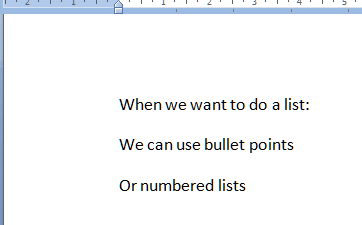
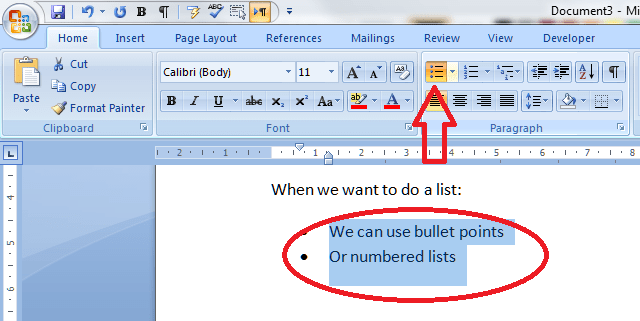
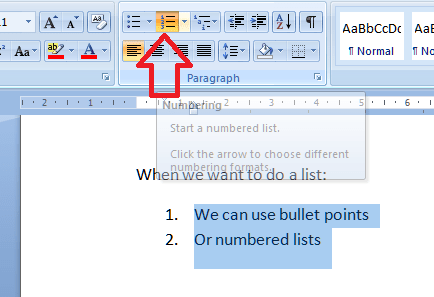


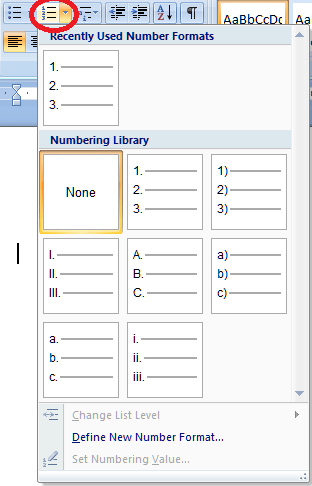

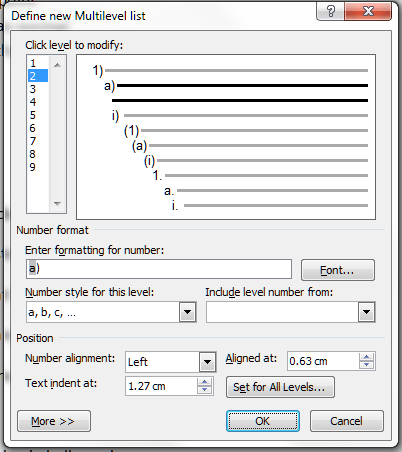
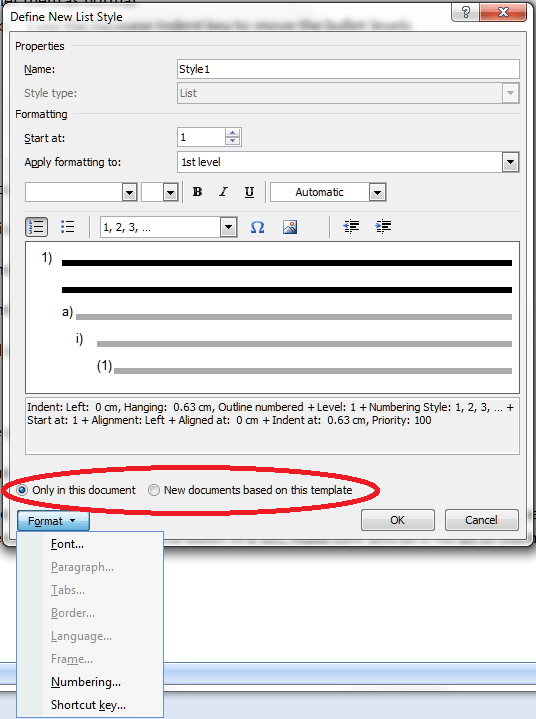
Staci
October 22, 2014 at 4:32 pm
HI! When do you use others symbols instead of just bullets, for instance, if I choose the arrows instead of just circled bullets is there definition behind them? Or is it simply preference of style?
Thanks!
LikeLike
Liz Dexter
October 22, 2014 at 4:33 pm
It’s really up to you, although I always think the simpler the better. The arrows can be quite nice in business presentations and to break things up a bit, though.
LikeLike
melba ross
October 21, 2015 at 8:04 pm
It gives you lots of information. I THINK IT IS REALLY AWESOME.
LikeLike
April Hunter
March 24, 2016 at 12:44 am
VERY USEFUL
LikeLike